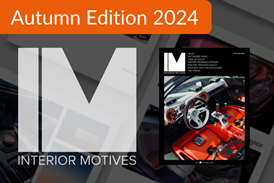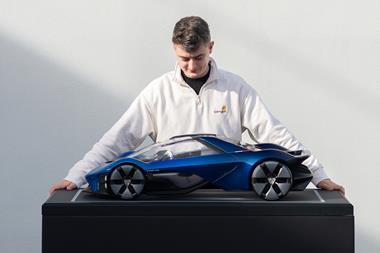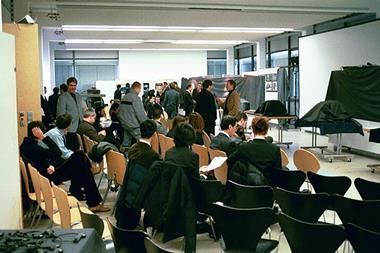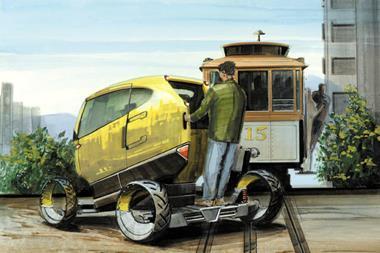August 30, 2002 - Transportation Design students at Germany's Pforzheim University displayed their work in the school's summer degree show in mid July, one of the two graduation shows per year.
The Pforzheim course is one of the leading Transportation Design courses in Europe, offering BA and MA degrees. The work from the school always impresses with it's focus on 'real world' vehicle design, and very high quality of the models and digitally produced illustrations.
The exhibition included work from graduating Diploma and Masters students, a major Opel-sponsored project by the 5th and 7th semester students, as well as work from students in the earlier stages of the course.
The graduating Diploma students:
- David Genot: 'A car for Africa'
- Raul Cenan: 'Audi Quattro - The next generation'
- Sven Weinfurtner: 'A car for my own'
- Dirk Müller Stolz: 'Pure Rotary Sports Car'
- Andreas Deubzer: 'Sportsgear and Transport - crossover motorcycle, offroader and jet ski'
- Adrianus Obers: 'New Urban Generation'
- Arno Gaudier: 'Neue Choreographie des Segelns'
The graduating Masters students:
- Jörg Walheim: Bentley Duff and Clement
- Wulin Gaowa: All Road - Off Road Limousine
David Genot presented the Renault Bambara, 'A Car for
Africa.' He chose Africa for several reasons, the two most important are the availability of raw materials such as aluminium, and the second one is more a reflection of the situation of Africa in the world economy. The car would be built in Africa and sold in Africa. It would be cheap to build, to sell and to maintain using local materials. A lot of parts like the chassis pieces are symetrical, such as the doors and windows, which are curved in only one direction for simplified production.
The target customers are the nomads that are travelling through the Sahara making business travelling and trading. The roof is moveable changing the inside volume, the seats backs folding down to transform the car into a very roomy mobile home. The chassis construction is applicable to a range of vehicle types, from small to large cars, front to rear engine. In this case it is a rear engine because of its simplicity, as in the VW Beetle. The fuel is contained in the tubular chassis structure.
First semester Masters students presented the 'Le Mans' project, a race vehicle for long-distance racing (LM-GTP), based on a marque not previously represented in this class.
Matthias Junghanns presented 'iRace', based around Apple's use of transparent materials in product design. The airstream is guided between the transparent skin and the body of the car to create necessary downforce without additional wings.
Inspired by the Alfa Romeo Tipo of 1931, Jung-Ho Jun presented a dramatic twin-engined Alfa Romeo LeMans vehicle with distinctive spine-like hood and tail forms.
Second semester Masters students presented 'Reduce to the Maximum', a modern small-car interior in the spirit of the Citroën 2CV, VW Beetle or Mini. The aim of the project was to reduce the number of interior parts, higher functionality, and fullfilling modern standards for refinement and safety.
Oliver Vogt chose the swedish fashion label H&M as a fictional producer, proposing a low cost interior, which nevertheless is attractive for young consumers. A lightweight and semi-transparent plasic structure forms two wave-like benches. The seats use a comfortable mesh material held in seat frames which fold to gain more space for transporting large objects. The dashboard is a hollow body, which functions as an air distributor, with its negative form creating a large open space in front of the passengers. The steering wheel and pedals are fully adjustable, and all controls and switches are concentrated on the steering wheel.
Also shown was 4th Semester project 'Sandrover', a recreational vehicle inspired by dune buggies or the Mini Moke.
The exhibition also saw the presentation of an Opel sponsored project "Next Generation Two Seater Sports Car" based on the package of the Opel Speedster (which is also shared with the Lotus Elise).
5th semester students created exterior proposals, while 7th semester students looked at interior design. Designers from the General Motors Technical Development Center Europe in Rüsselsheim worked closely with the students over several months. We will have a separate 'behind-the-scenes' report on the Speedster project at a later date.
The Pforzheim Transportation design department is housed in a purpose built 'glass cube' building on the outskirts of the town of Pforzheim, on the edge of the Black Forest, between Stuttgart and Karlsruhe.
The first three semesters of the Transportation Design course are taught in conjunction with the Industrial Design course, and in the 4th semester the students begin to specialize in Transportation Design.
During this semester the students develop their design projects from 2D to 3D using digital models rather than clay, using Alias|Wavefront Autostudio for modelling, packaging studies, renderings and animations. Only in the 5th semester do the students develop their projects with the use of clay models. This emphasis on digital design techniques early in the course reflects the changing nature of the automotive design process.
The computer department has 15 workstations with 10 devoted to Alias programmes. The school has a great deal of support from the car industry through sponsored projects and regular visits from designers who tutor students in the various aspects of Transportation Design. BMW, Audi and VW regulary offer internships while Porsche and Mercedes are just around the corner.
The school has a Master of Transportation Design program (MTD) which is a 3 semester course. A diploma or degree in Industrial design is required for acceptance on this course but students gaining entry will have a certain level of freedom in planning the course structure. The school aims to take on a wide variety of students who will eventually be capable of working in all aspects of transportation design.
Pforzheim University websites:
www.fh-pforzheim.de
intl.fh-pforzheim.de
Photos: Brett Patterson
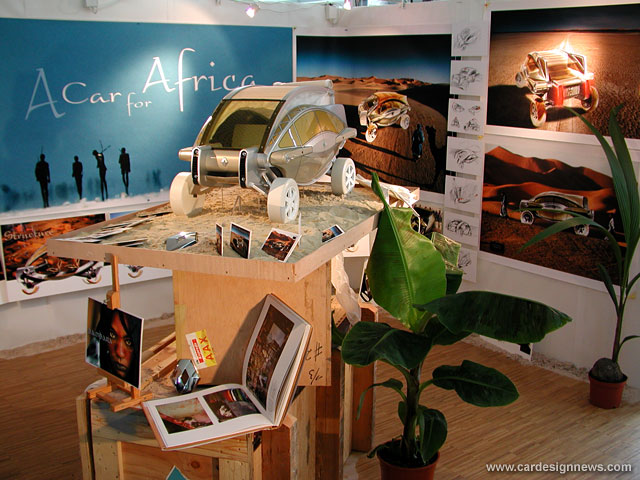
'Renault Bambara: A car for Africa' by David Genot
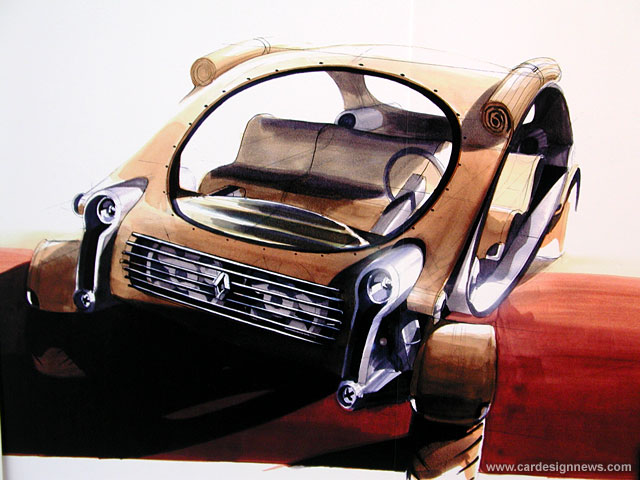
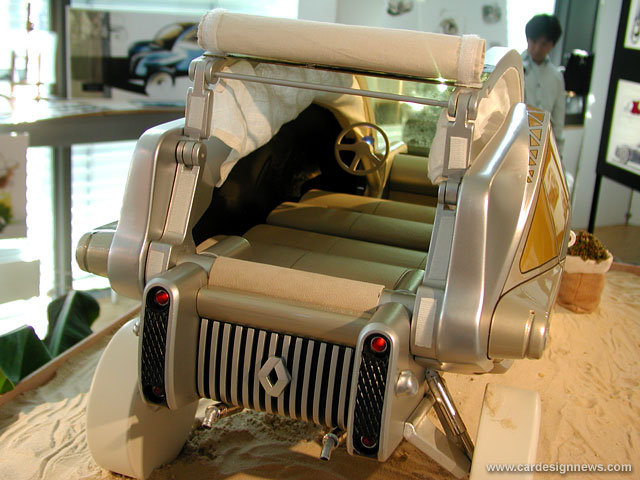
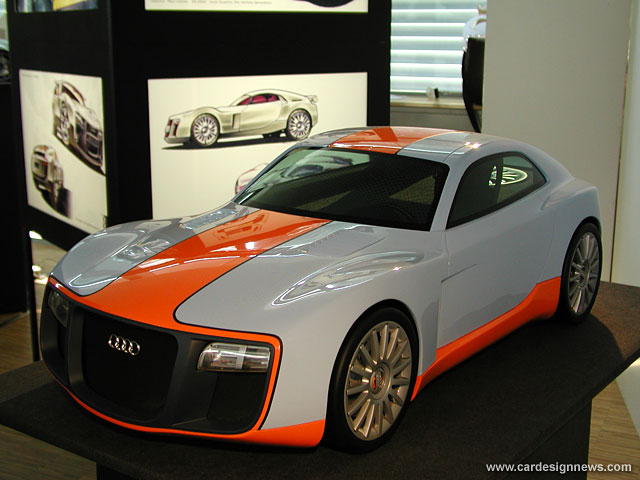
'Audi Quattro' by Raul Cenan

Raul Cenan
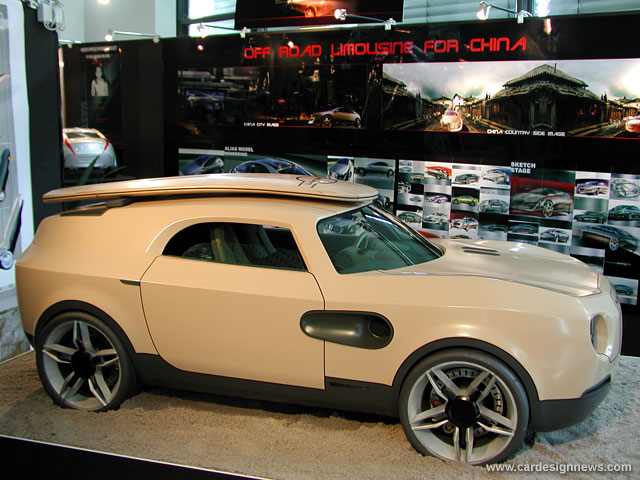
'A car for my own' by Sven Weinfurtner

'Neue Choreographie des Segelns' by Arno Gaudier

Speedster concept by Andreas Thurner
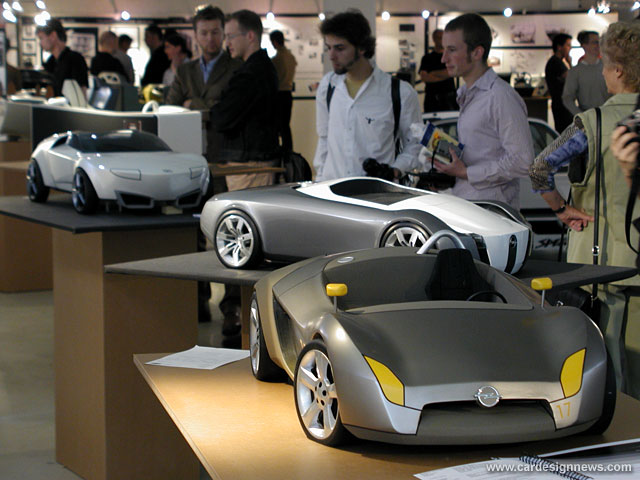

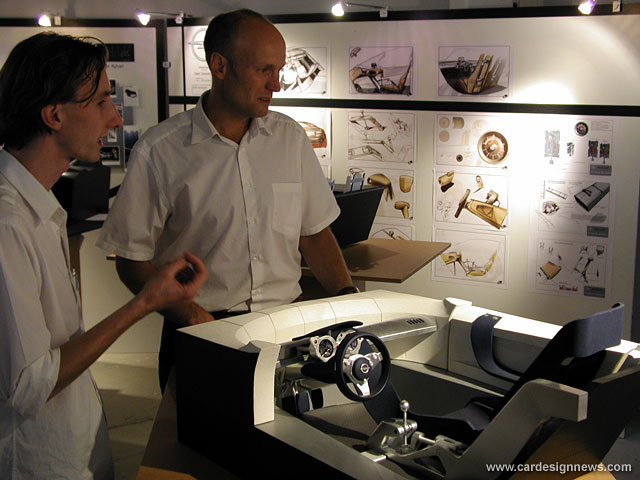
Bo Leutiger explains his Speedster interior proposal to Opel Interior Design chief Michael Pickstone. The project was supported by Opel design staff.


